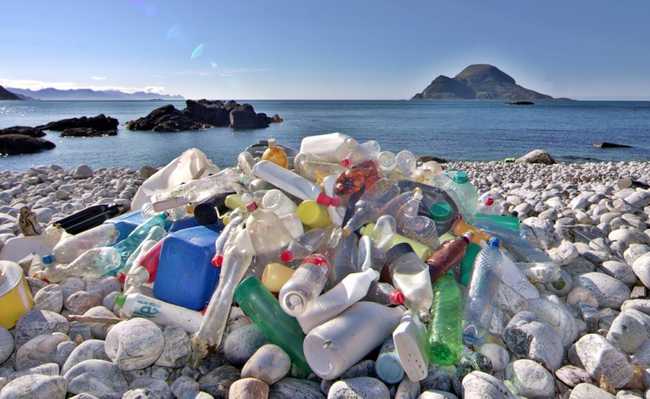Nitrous oxide: gas emitted by the agricultural sector increases the greenhouse effect
Nitrous oxide, emitted in significant quantities by the agricultural sector, also destroys the ozone layer

Photo-Rabe image by Pixabay
Nitrous oxide is a colorless, non-flammable gas at room temperature and is commonly known as laughing gas or nitro (NOS). Nitrous oxide is a gas produced naturally in the environment and important for the climate balance, however, it can also be produced industrially for several applications. Nitrogen is one of the most important atoms for terrestrial life and is present in several molecular structures. The element nitrogen (N) is also a very important part of the atmosphere and natural cycles such as the nitrogen cycle.
Nitrous oxide (N2O)
Formed by two nitrogen atoms and one oxygen, nitrous oxide, it is used by industry as:
- Oxidizing agent in rocket engines;
- Optimizer in fuel burning in engines (nitro);
- Aerosol propellant;
- Anesthetic (mainly in the dental field, known as laughing gas).
In nature, the nitrogen present in the atmosphere is captured by plants and converted into ammonia, which will be deposited in the soil and later used by plants. This process is called nitrogen fixation. Ammonia deposited in the soil can undergo nitrification processes, resulting in nitrates. The microorganisms present in the soil can transform these deposited nitrates into gaseous nitrogen (N2) and nitrous oxide (N2O), through the denitrification process, thus emitting them to the atmosphere.
Greenhouse gases
The following are considered gases with the greatest contribution to the increase in the greenhouse effect:
- Carbon dioxide (CO2);
- Water vapor (H2Ov);
- Methane (CH4);
- Nitrous oxide (N2O);
- CFCs (CFxCly).
Much is said about CO2 due to its high concentration in the atmosphere and its greater impact on global warming, but the emission of the other gases listed is also very worrying. The concentration of nitrous oxide in the atmosphere has become increasingly worrying, making necessary actions to reduce its emissions.
Impacts of excess nitrous oxide in the atmosphere
As with everything in nature, the excess of something can change the balance and stability of a system, and even the planet as a whole. The excess of gases, such as those considered potentially causing the greenhouse effect, is an example of an impact of global proportions.
Industrialization and the grouping of civilization into cities have generated needs to be met on a large scale, such as food production, promoting a large growth in agriculture, especially in the production of grain for the manufacture of animal feed (learn more about this topic in article: Intensive animal husbandry for meat consumption has impacts on the environment and on consumer health." With these needs met, many gases began to be produced and emitted into the atmosphere in gigantic proportions, causing their accumulation in the atmosphere and altering several terrestrial cycles, also impacting the planet's average temperature. One of these gases is nitrous oxide.
Nitrous oxide (N2O) is present in much smaller proportions than carbon dioxide (CO2), but its effect is much greater. Its presence in the troposphere is inert, contributing only to the absorption of thermal energy, however, when present in the stratosphere, it degrades the ozone layer. Nitrous oxide has the property of retaining heat in the atmosphere about 300 times greater than CO2, that is, one molecule of nitrous oxide is equivalent to 300 molecules of CO2 in the atmosphere. Nitrous oxide also has an impact on the ozone layer, contributing to its degradation, and it remains in the atmosphere for over 100 years before being degraded naturally. It is estimated that 5.3 teragrams (Tg) of nitrous oxide are emitted by humans in one year (1 Tg is equivalent to 1 billion kg).
emission sources
In November 2013, the United Nations Environment Program (UNEP) published a report on nitrous oxide and its impact on the planet's climate and ozone layer. According to the report, nitrous oxide is the third gas, emitted by human activities, that contributes the most to global warming, and the gas with the greatest effect on the degradation of the ozone layer. From research carried out, analyzing the concentration of gases present in air bubbles trapped in ice columns at the poles, a comparison was made with the current concentration of CO2 (parts per million - ppm) and N2O (parts per billion - ppb) and a graph is plotted showing the increase of these gases over time.

Source: Drawing Down N2O / unep.org
A great increase in the concentrations of CO2 and N2O can be seen right after the period of the industrial revolution, from the 18th century onwards. The report points out the main human sources of nitrous oxide emission as agriculture, industry and fossil fuel, biomass burning, sewage and aquaculture, and the sum of the last three sources does not reach the amount of nitrous oxide emissions from agriculture.

Source: Drawing Down N2O / unep.org
The problem of N2O emission in each sector
Agriculture
Nitrogen, essential for food production, is a vital element for molecular structures such as enzymes, vitamins, amino acids and even DNA. The addition of nitrogen in agriculture, through fertilizers, accelerates and increases the yield of crops, however this also causes the emission of N2O. It is estimated that about 1% of the nitrogen applied to a soil will directly emit N2O. 1% seems low, but if you think about the total area that agriculture occupies in the world and the amount of fertilizer used annually, it may not be that small.
Among the sectors that most emit nitrous oxide, agriculture is the main responsible for the annual emission: about 66% of the total emission. For this sector, not only direct N2O emissions from the application of fertilizers are accounted for, but also direct and indirect emissions from the production process of synthetic fertilizers, animal manure, animals raised in pastures, leaching and manure management.
Some measures in the application and handling of fertilizers and manure can help to reduce this impact:
- Regularly test the fertilizer/manure distribution mechanism to ensure that the application is being accurate;
- Ensure that the person applying the fertilizer/manure is well trained to apply as little as necessary;
- Carry out soil analysis to establish the required amount of fertilizer;
- Try to use more manure than inorganic fertilizers;
- Improvement in manure handling techniques.
Research for the reduction of N2O emission by fertilizers and efficient alternative means must be carried out constantly.
Industry and fossil fuel
Nitrous oxide emissions from industries and vehicles occur through two main means. The first is called homogeneous reaction, which is when reactants of the same physical state react, an example is the burning of gaseous fuel (gas with gas). In gaseous fuel there may be the presence of nitrogen compounds, which can be generated during heating in the combustion process. The second medium occurs in heterogeneous reactions, where one can be a gas and the other a solid, an example is the burning of coal or the formation of N2O in automobile catalysts.
Airplanes, light and heavy vehicles are the main sources of nitrous oxide emission, even though they are not very relevant compared to the CO2 emission they provide - this is no excuse for not being a worrying fact.
In industry, the two main sources of nitrous oxide emission are in the production of nitric acid (HNO3) and adipic acid. Nitric acid is considered a key ingredient for the production of fertilizers, for the production of adipic acid, explosives and also for the processing of ferrous metals. More than 80% of all nitric acid produced in the world goes into the production of ammonium nitrate and calcium ammonium nitrate double salt - 3/4 of the ammonium nitrate goes back to the production of fertilizers. During the synthesis of HNO3, N2O can be formed as a minor reaction product (about 5 g of N2O for every 1 kg of HNO3 produced).
The production of adipic acid (C6H10O4) is the second largest source of nitrous oxide emission in the industrial sector. The vast majority of adipic acid produced is destined for the production of nylon, and is also used in the manufacture of carpets, clothing, tires, dyes and insecticides.
Technologies for decreasing N2O emission in adipic acid production are now available, reducing the emission by about 90%, and approximately 70% of adipic acid production industries apply these technologies.
biomass burning
Biomass burning means burning any material of plant or animal origin for energy production. In summary, biomass burning refers to burning naturally, or by human causes, mainly of forests/woods and even charcoal.
The average amount of N2O emitted by biomass burning is difficult to measure, as it depends a lot on the composition of the material that is burned, but it is estimated that it is the third largest source of nitrous oxide emission. Most forest fires are caused by natural factors such as lightning, but human action is also quite worrying. Burning forests to advance agriculture and livestock are among the biggest concerns about burning forests, natural vegetation or even crop residues, as fire is a cheap and easy way to clear areas.
Another worrying fact is the use of wood and charcoal to generate energy and even in stoves. In many regions of the world, the generation of vegetable energy and its use for certain tasks, such as cooking, is very common, and it can also be an impacting source of N2O emissions.
Laws and actions to reduce and prevent burning must be taken to reduce the emission of N2O from burning to "clean" areas, for agriculture or any other type of purpose, as well as to control and fight fire by natural causes. In addition to providing the risk of uncontrolled flames, which could devastate an immense area, as occurred in November 2015 at Chapada Diamantina, the emission of polluting and toxic gases can greatly affect the region.
On the emission from the use of biomass for energy production and in stoves, the improvement in techniques to use less fuel, with greater efficiency and the replacement with fuels that do not release N2O, such as gases from petroleum, are viable alternatives to reduce N2O emission from these sources. In the case of replacing them with gases from petroleum, we will have the problem of CO2 emission - it may seem crazy, but it is better to release CO2 instead of N2O, since N2O, in addition to contributing to the destruction of the ozone layer, has a 300 times greater heat retention power than CO2.
Sewage and aquaculture
Together, sewage and aquaculture account for 4% of the total emission of nitrous oxide caused by man. It may seem small compared to other sources, but they are still sources of concern. Sewage is characterized as any discarded water that contains contaminants and impurities that need to be treated so as not to impact the environment. Aquaculture is the cultivation of aquatic organisms in confined or controlled spaces, such as raising fish for sale.
The emission of nitrous oxide by sewage can take place in two ways: by chemical and biological transformation during sewage treatment and by disposal of sewage into tributaries, in which nitrogen, contained in high concentration in sewage, will be transformed into N2O by bacteria present in the tributaries.
As with the problem with fertilizers, in aquaculture the problem is the high amount of nitrogen applied. The large amount of nitrogen present in the food of cultivated organisms leads to high levels of nitrogen present in the water, which will be transformed into nitrous oxide by chemical and/or biological process.
The main means of reducing nitrous oxide emitted by effluents are treatment techniques, thus reducing the amount of diluted nitrogen. Some techniques can remove up to 80% of the diluted nitrogen. Treatment policies and technologies must be adopted and established to reduce nitrous oxide emission.
Aquaculture techniques can also be applied to minimize N2O emissions, such as: integration of agriculture and aquaculture systems, reusing water rich in nutrients to water crops and aquatic plants to feed aquatic creation, integration between aquatic species, when the waste of one species serves as food for the other, modification and optimization of food and nutrients, aiming to minimize the dilution of nitrogen in the medium.
The impacts caused by the use of nitrous oxide call attention to something important: the planetary limits. To better understand this topic, take a look at the article: "What are planetary limits?"










